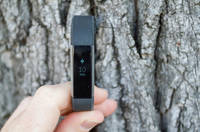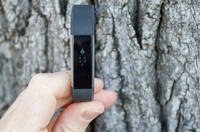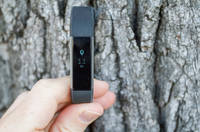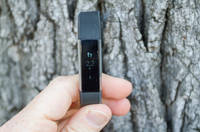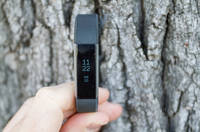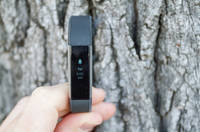Fitbit Alta In-Depth Review
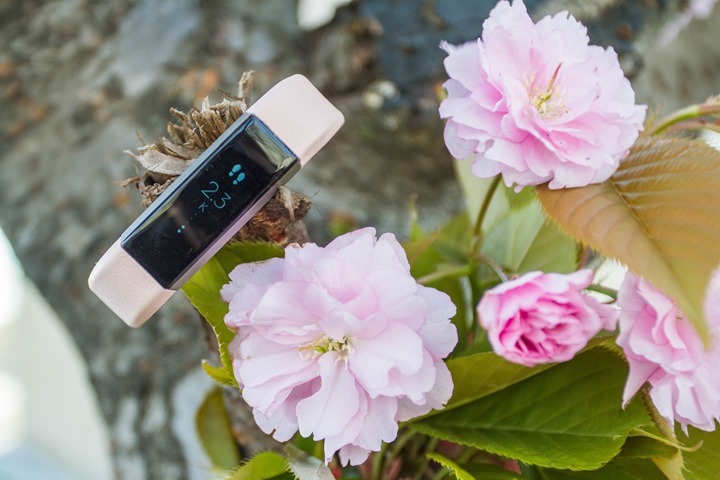
It’s been a touch over two months since Fitbit announced their most recent wearable, the Fitbit Alta. Like all of Fitbit’s entrants this year, it was designed to be more fashion focused, while giving incremental upgrades in terms of features like move alerts and automatic activity recognition. The idea being that it somewhat replaces the existing Fitbit Charge (and before that the Fitbit Force & Flex) units.
I’ve been using it for the past month as my daily activity tracker, seeing how well it handles as a more low-key alternative. And thus at this point I’ve got a fairly good handle on the good, the bad, and the ugly.
Note that Fitbit did send over the unit to try out. But like usual after my review publishes I’ll give it back to them. Leave no traces and all that. Feel free to hit up the links at the bottom if you’d like to support the site (or if you just like clicking around the interwebs).
With that – let’s dive right into!
Unboxing:
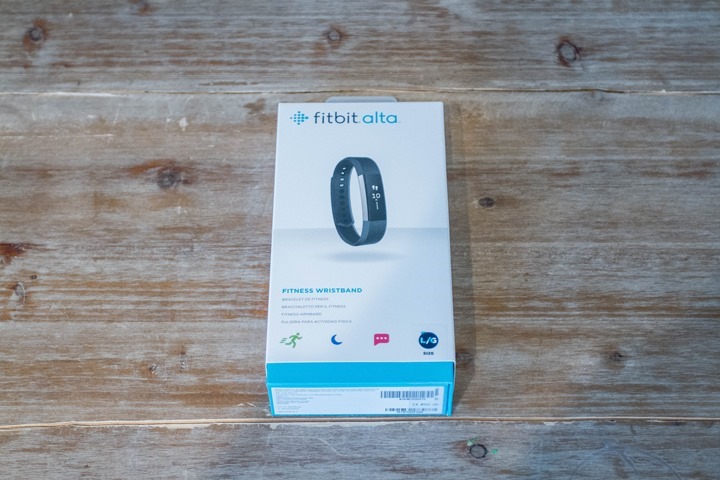
The Fitbit Alta comes in a few different colors and sizes, so those will vary slightly – but the core of the unboxing would be the same. To begin, the inner box slides out of the outer shell:
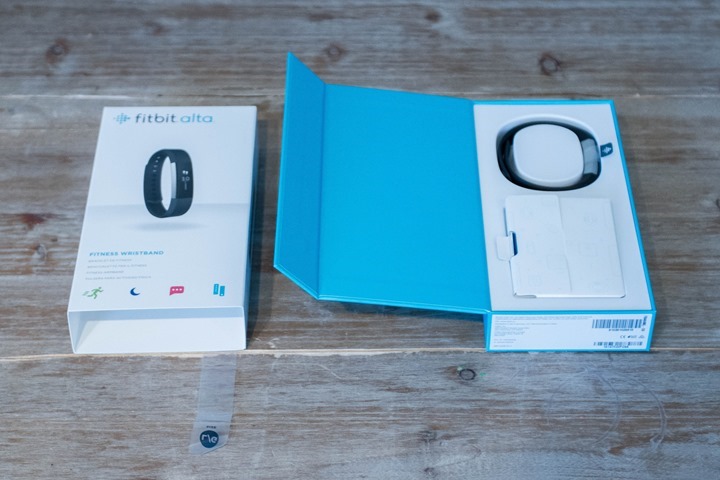
Inside you’ll find the Alta just sitting there, waiting for you to pluck it out. Below it is a small treasure box. That little treasure box contains two layers, or rather, two boxes of its own. First up is a small pile of paper stuffs. Manuals and such. Whereas the other box is the charger and USB adapter.
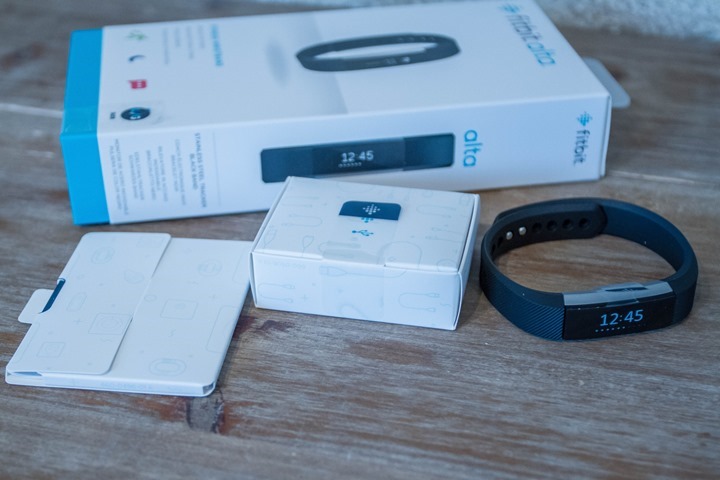
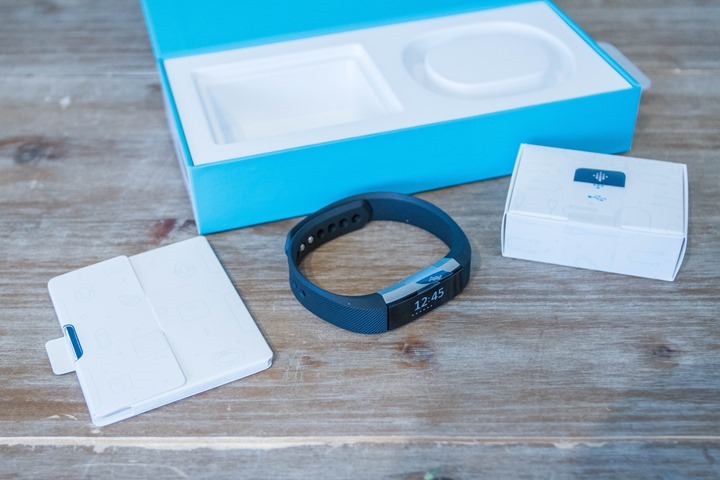
The USB adapter is only needed if you plan to sync your Fitbit Alta via desktop software as opposed to syncing via a mobile phone.
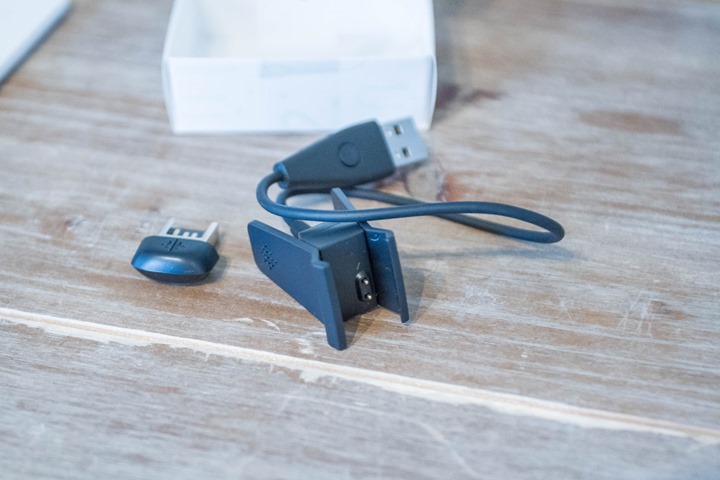
Meanwhile, the charger just charges (it doesn’t sync):
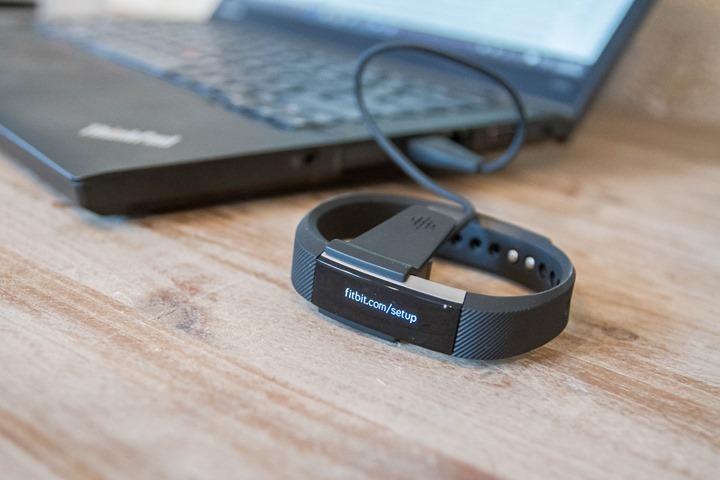
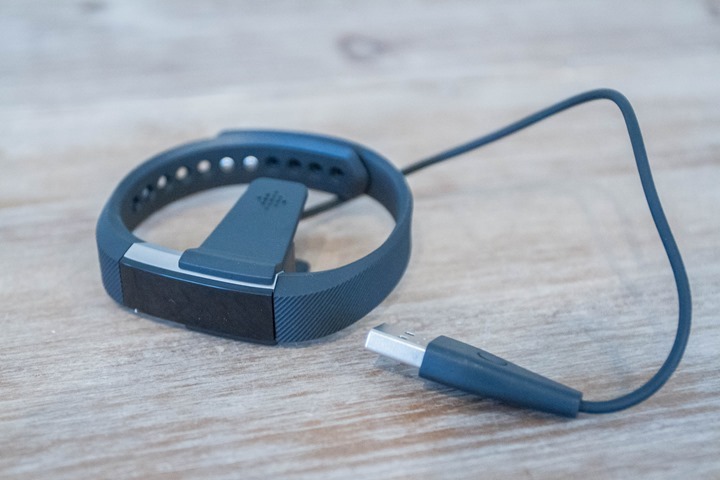
Here’s the paper stuff. Basically it tells you to remember to take off the band every once in a while so you can’t sue Fitbit when you get a rash, and that you shouldn’t go swimming with it. And that you shouldn’t put it on upside-down because you’ll get non-ideal results.
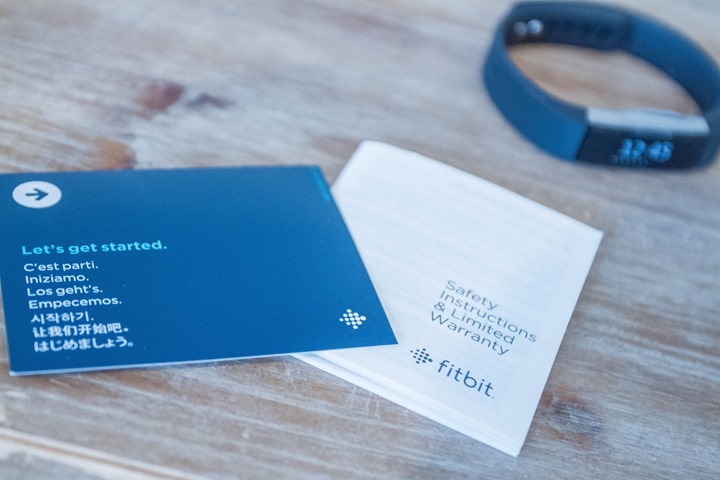
And finally, here’s the unit itself, front and back:
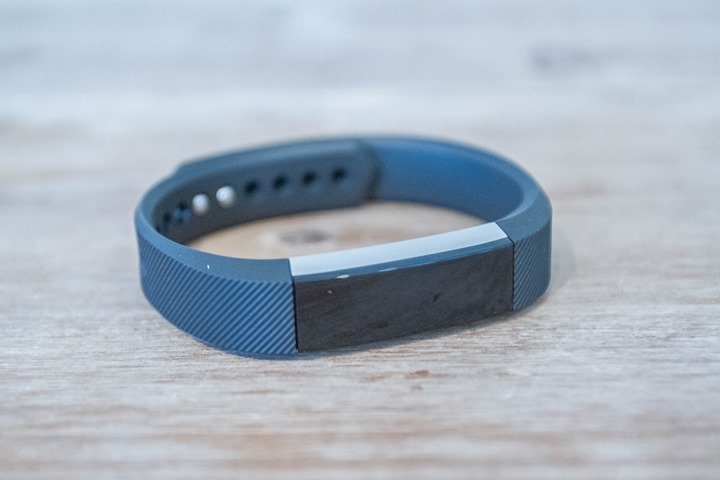
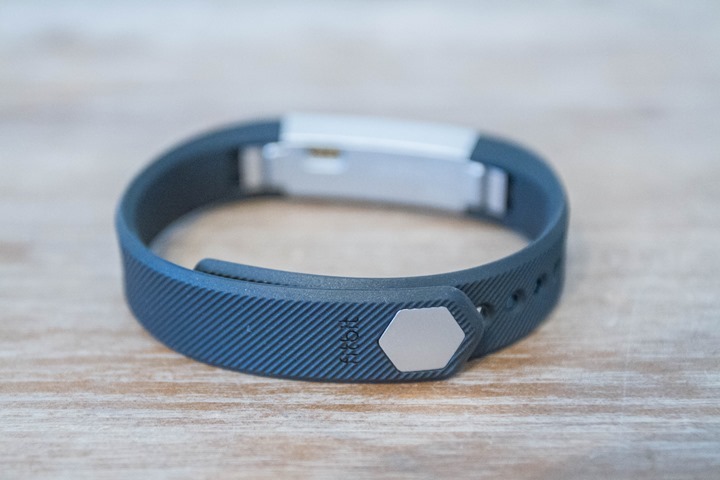
Looking closer at the unit itself, it pops out of the band, which allows you to swap to a flotilla of different accessory styles. For example, pink:
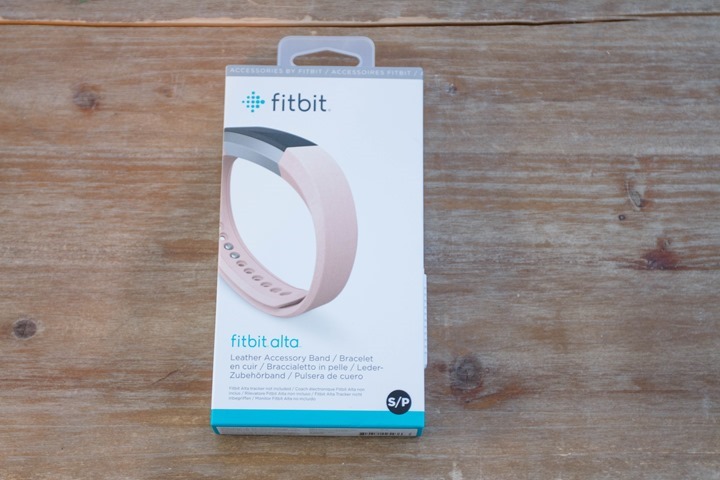
Here’s you can see the multiple pieces pulled apart:
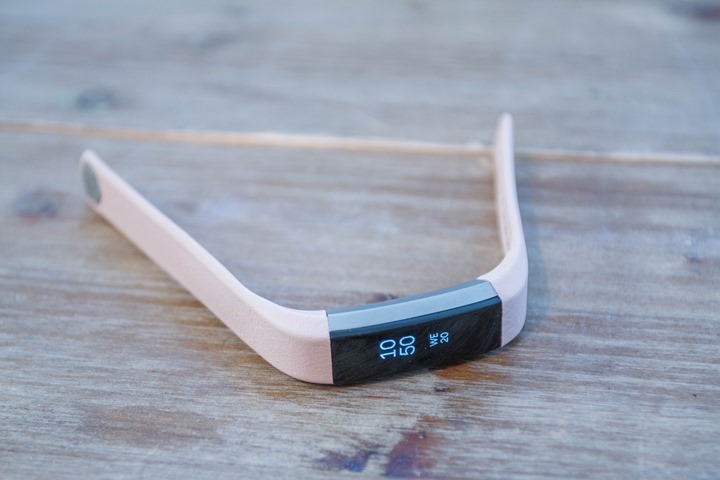
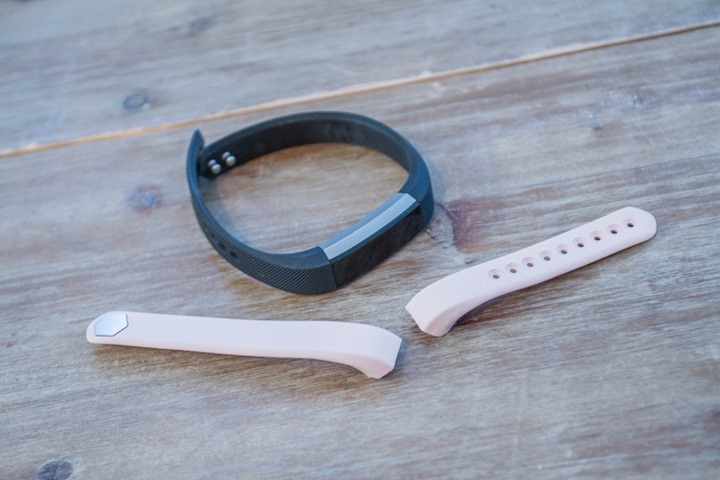
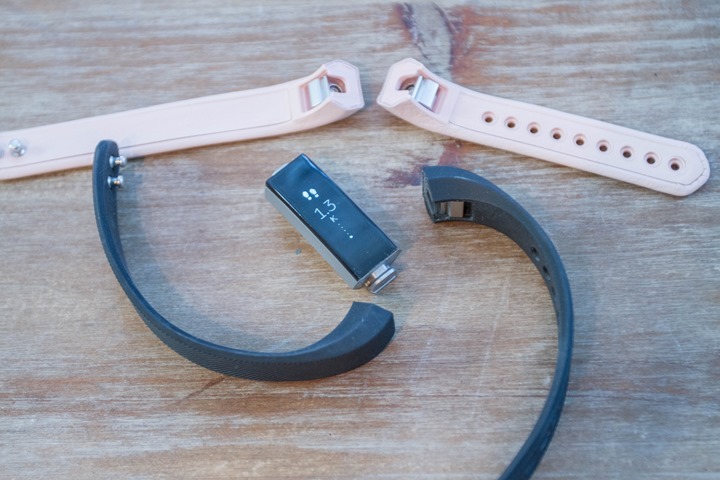
The bands have that little metallic clip you see on the inside, so they don’t pull apart without depressing that (which is impossible while worn on your wrist, so no worries there).
Size & Weight Comparisons:
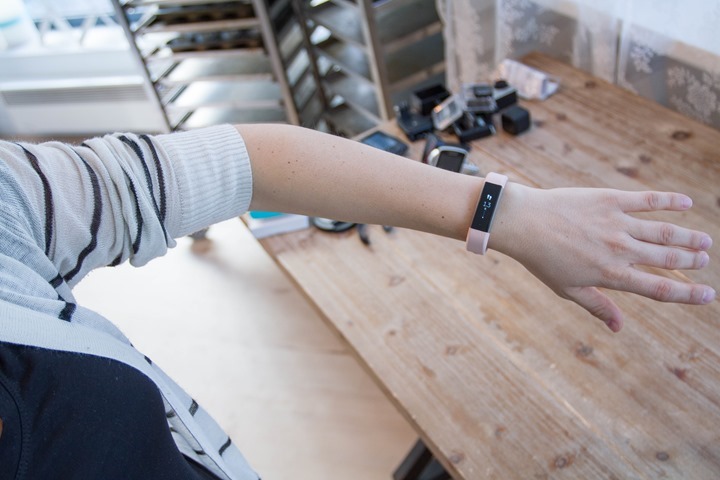
(Above: On The Girl’s wrist, she’s petite at 5’2” tall – so that gives you some perspective on how it looks on smaller wrists)
When it comes to size the Fitbit Alta is a fair bit smaller than the Fitbit Charge (seen below left), as well as something like the Polar A360 (which obviously has a lot more features) – but just to give some context.
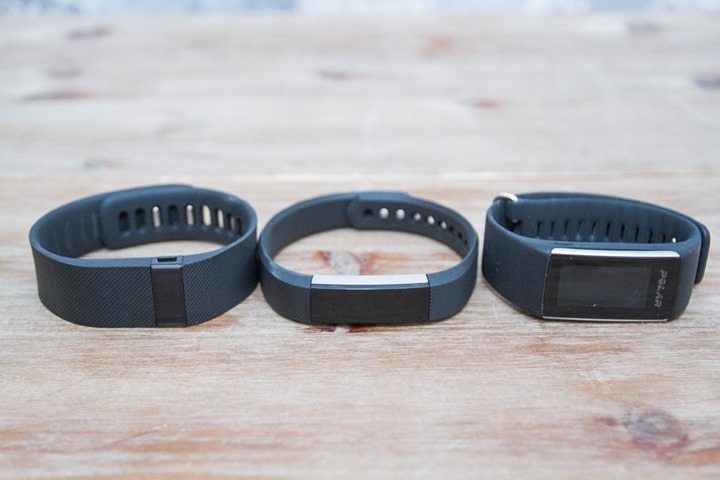
But while it’s smaller in size, it’s actually slightly heavier. It comes in at 29g, versus the Fitbit Charge at 24g and Fitbit Charge HR at 26g.
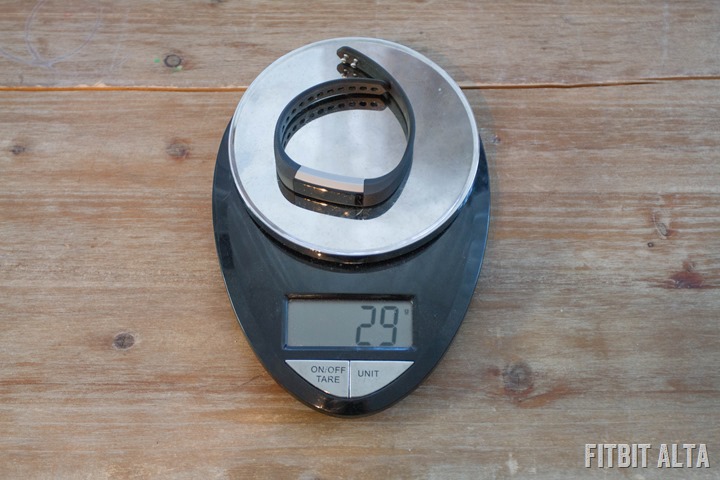
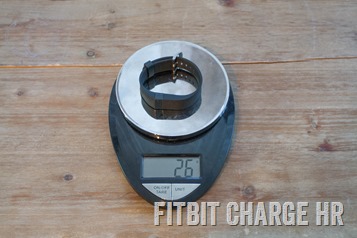
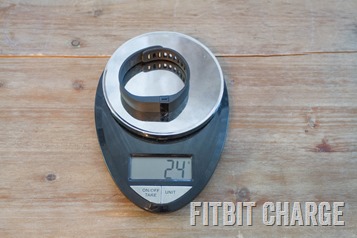
As you can see, all of these are pretty much in the same ballpark, minus the A360 – but again that has a full color screen.
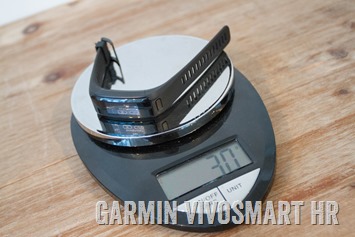
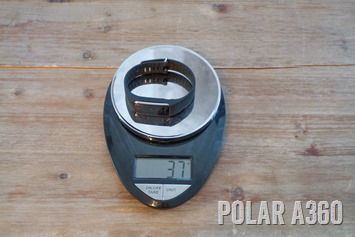
Obviously note that the exact band you use on the Fitbit Alta will change the weight. So they’ll all differ a little bit depending on the materials.
Day to Day Use:
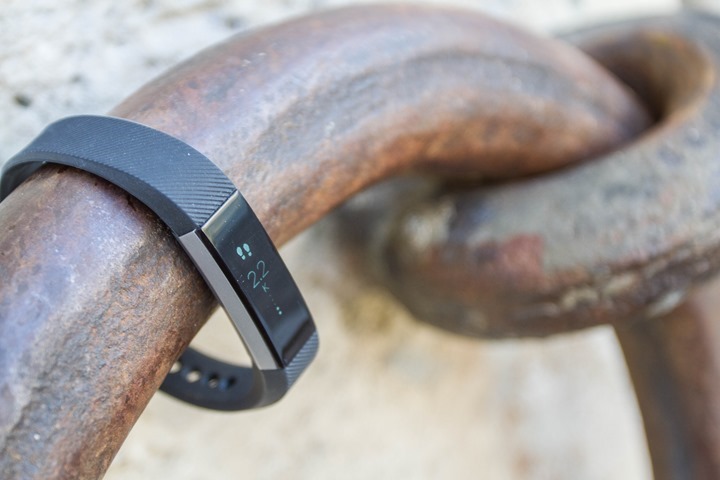
It should come as no surprise that the Fitbit does well in step tracking. After all, if there’s anything Fitbit generally nails – it’s tracking of steps and the metrics around that. Like all of Fitbit’s products, the unit has a small screen on it, this one oriented horizontally. But you can rotate it if you’d like.
On the screen are the following metrics: Time (+ Date/Day), Steps Walked Today, Distance (Miles or Kilometers), Calories Burned, and Active Time. Plus the currently set alarm if you have that configured.
That’s it.
To rotate through them you’ll simply tap the display. There’s no swiping concept on the Alta, just a tap. And tap, and more tap.
All of this data is saved on the unit itself, and then sync’d to the mobile app. You can configure it to sync continuously (called ‘All day sync’, or only when you’ve manually sync’d it. I just prefer the all day sync, as I don’t find it hits my battery that badly.
Within the dashboard you’ll see your totals for the day (steps, distance, calories, etc..). But you can also click on a given metric to get more of a historical view.
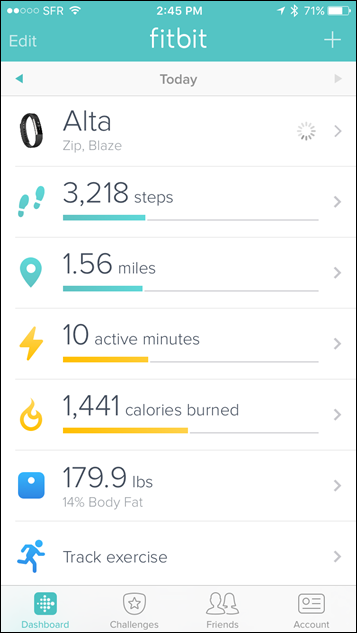
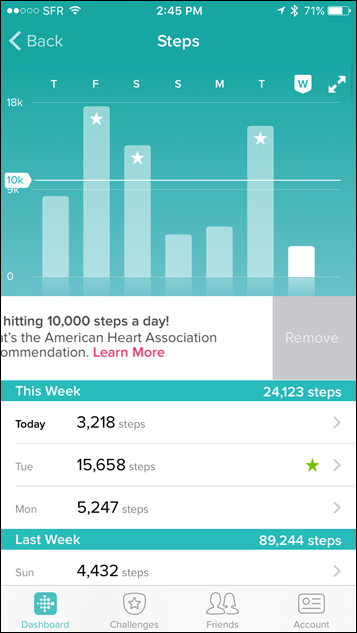
Note with the Alta the display is always off, unless tapped or if your wrist is detected as turned. This is to save battery. There is no option to let the display remain on at all times. In general this mostly works, but I find it a bit finicky from time to time. I think it’s fair to say that the Apple Watch is the most impressive in terms of recognizing the wrist turn properly. So stepping from that to this can be a bit frustrating in how often it misses the more subtle wrist turns (such as sitting and reading, and/or eating). I really wish there was an option to just leave the display on.
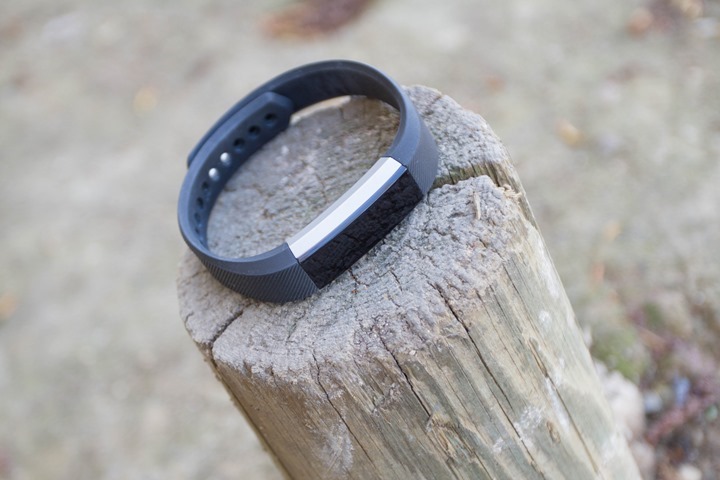
The singular unique feature to the Fitbit Alta that’s not actually (yet) found on any other Fitbit product is the new inactivity alerts, called ‘move reminders’. These alerts follow in the footsteps of Garmin, Polar, and many others in reminding you that you’ve been lazy that hour.
The way it works is that each hour, at 10 minutes to the top of the hour (i.e. 2:50PM, 4:50PM, 5:50PM, etc…), it’ll vibrate to remind you that you’re short on steps for that hour (assuming you are). The number of steps is 250 within a given hour. You can’t change the steps per hour, but you can change the ‘window’ that it’ll buzz you on. I extended mine a bit later. Note that if it thinks you’re sleeping, it won’t buzz you (i.e. if I slept in till 10AM).
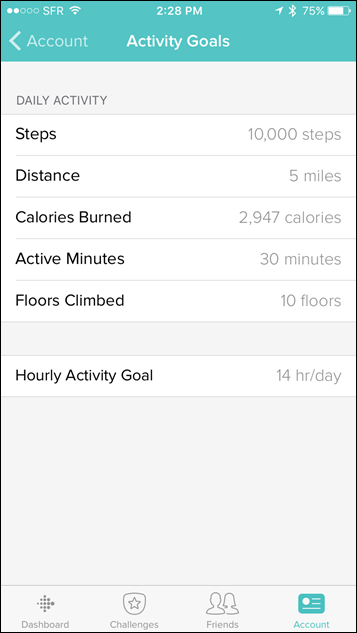
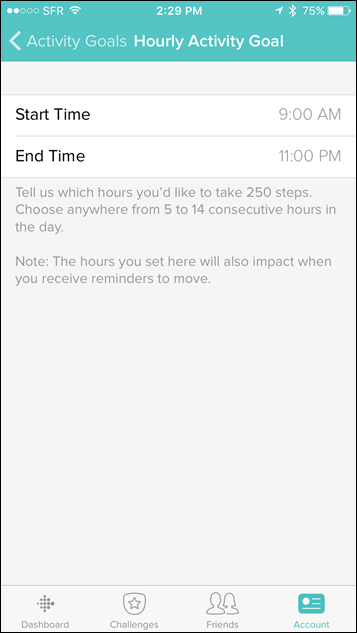
Typically when it buzzes it’ll give you some cute and/or encouraging message to get you moving, along with the number of steps remaining that hour.
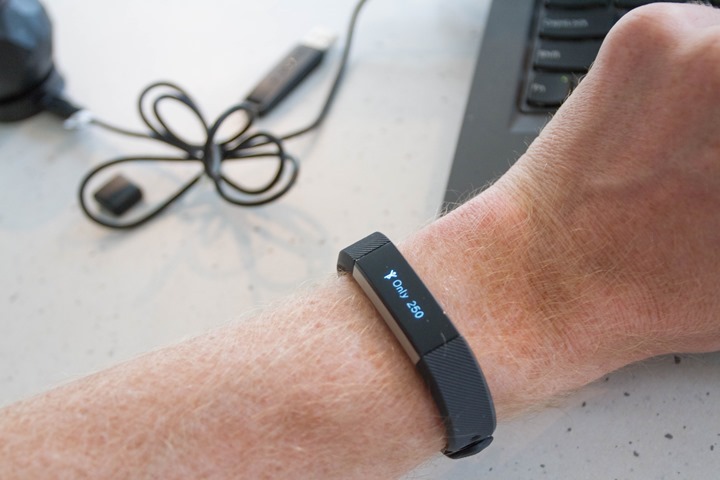
That segues into Active Minutes. While Fitbit has a big-long article explaining exactly how they measure these, it can be best summed up as anything other than sitting when done for more than 10 minutes at a time. So an 8-minute walk won’t cut it, but an 11-minute walk will.
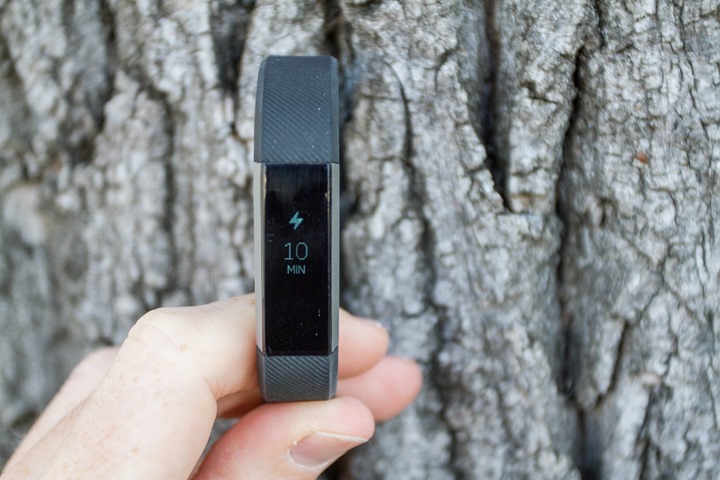
Active Minutes are tracked both on the display (as seen above with the lightening bolt), as well as in the app. For example, below you can see yesterday that it triggered on my run in the evening. It also triggered at noon when I went briefly to the grocery store. Interestingly though, last Thursday it said I didn’t trigger even once. That’s sorta odd since I spent the entire day active on my feet at Sea Otter bouncing around.
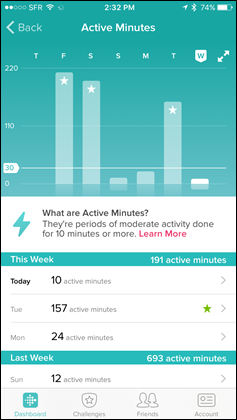
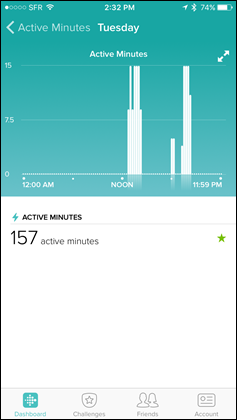
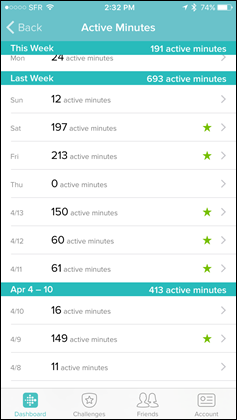
Finally, as for general use (I’ll cover sport and sleep in later sections), I should mention the battery. The unit uses the small charging clip that you saw in the unboxing section, in order to charge. I’ve found that it charges very quickly. Definitely under an hour to get a full charge.
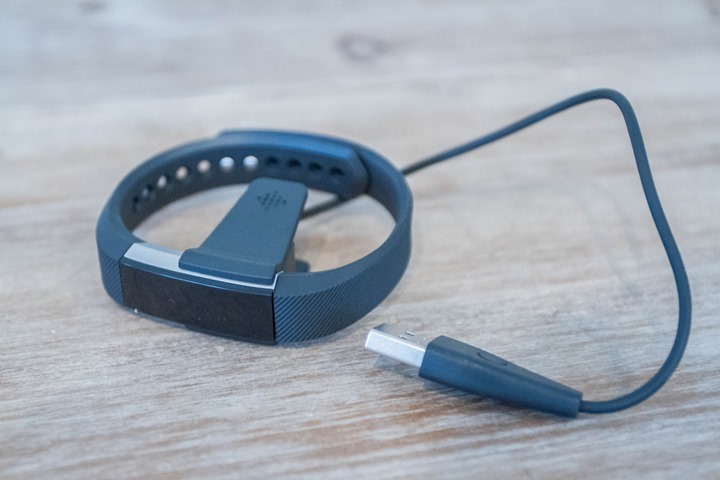
As for battery life, it’s on par with Fitbit’s 5 day guidance. I’ll give Fitbit credit in that they almost always nail (or even exceed) their published battery life timeframes. I’ve had no problem getting 5 days between charges. And since charging typically doesn’t take very long, it’s a nice balance between the two.
Sport & Fitness Use:
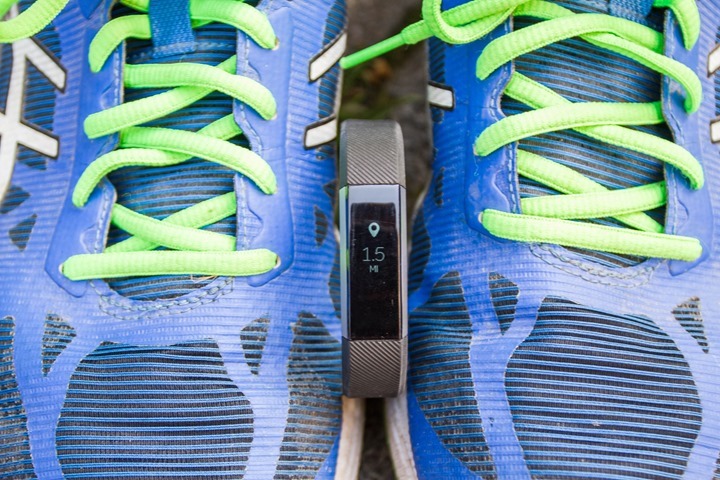
When it comes to sport and fitness use of the Alta, it’s about as hands-off as you can get. By that I mean that while you’re actually doing your activity of choice (Running, Cycling, Yoga, Horizontal Shuffle, etc…), there’s no feedback about your workout to you on the display. Instead, it’s just business as normal (steps/distance/time/etc…).
That’s because unlike the previous Fitbit Charge or Charge HR, there’s no method to start a workout/activity. Instead the Fitbit Alta uses auto-recognized activities, which they call SmartTrack.
SmartTrack is designed to recognize workouts that are longer than 15 minutes in length. But it doesn’t do that on the band itself. Rather it does it after your data is sync’d to the Fitbit platform. To illustrate a bit better, first start off and go for a run (oh, and put the band on your wrist):
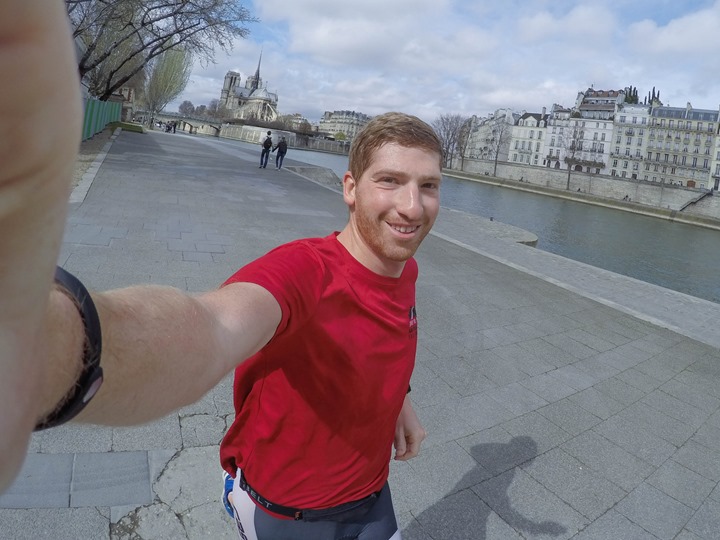
Now again, as you’re running you won’t see anything workout specific. Sure you’ll get your daily steps and distance, but it’s not separated out between the run and the rest of the day (like it is on other Fitbit products).
After you finish dying outside, go ahead and sync your Alta to your phone. If you’ve got automatic sync on, then this will happen pretty quickly.
What you’ll notice now is that you’ve got a ‘Run’ activity created on your dashboard, for the period of the run. This activity will show you total steps and calories for the run, as well as time. But not distance or pace.
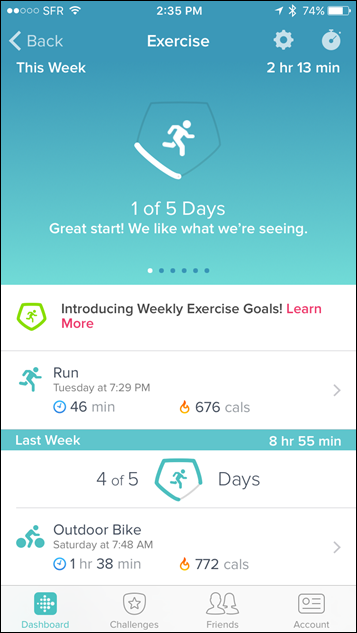
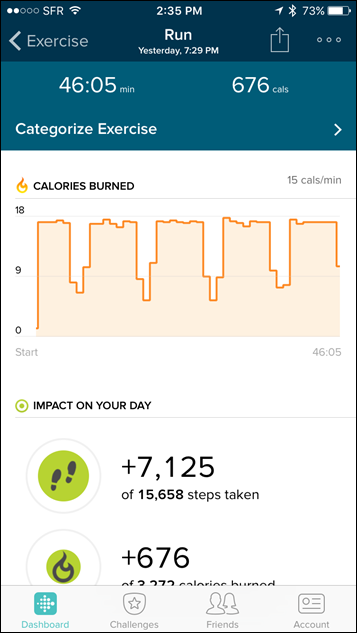
In my testing, it does a pretty good job of picking up the start/end times of your activity. Where it can get tricky though is when you finish your activity with a longer walk back to your starting point (i.e. cool-down). Most of us might not count that as part of the run, but oftentimes the Alta will. For example, for the same run above, here’s the summary from the Garmin GPS watch I was wearing. Note the time on the Garmin had me at 55 minutes, versus the Fitbit at 46 minutes. It appears as though the Fitbit cut off the shorter intervals at the end (30secs running hard, 90secs rest).
If I don’t have this sort of short activity, it does seem to get it fairly close in time.

Said differently: If you want your 45min and 32sec run to be shown at 45:32, then the Alta isn’t for you. If you’re OK with the run being shown at 45min or perhaps even 48mins, then it’s OK. So if you’re just looking to go for a run for a set period of time and don’t care about distance, then the Alta is fine. But if you’re on a training program with distances and paces, then you should look elsewhere.
It does track other activities – for example, cycling. But in the case of cycling it won’t use your phone for GPS like the Fitbit Blaze will. Instead, it just gives you a total time. See below for a comparison. At left is my summary screen. In the middle of a bike workout with the Fitbit Alta. And at right is a bike workout with the Fitbit Blaze (which has GPS):
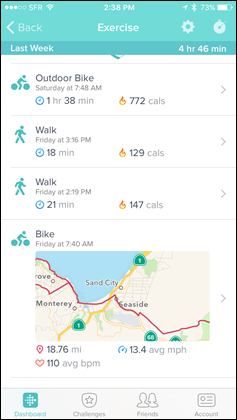
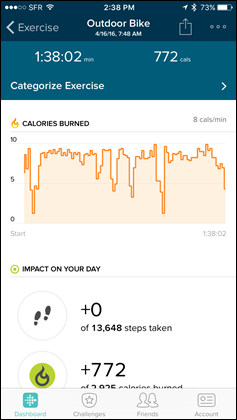
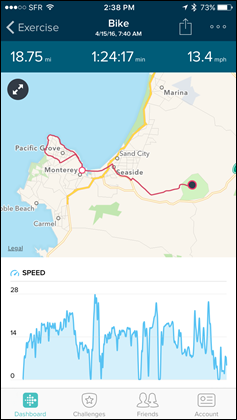
You can tweak which activity types it tracks, as well as the thresholds for them within the settings:
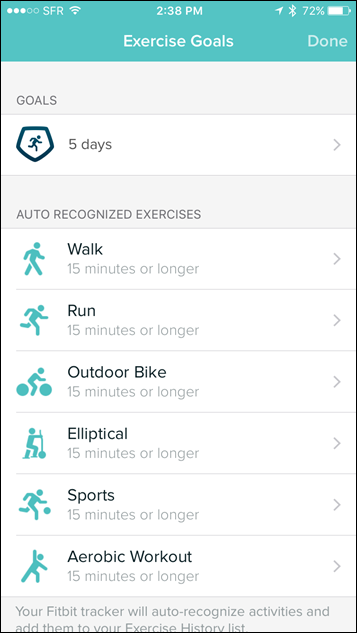
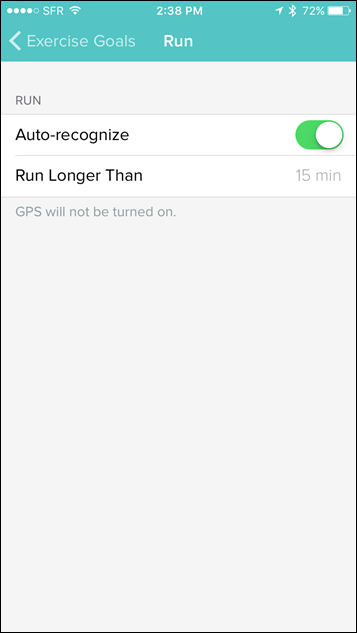
Finally note that the Fitbit Alta does NOT have an optical heart rate (HR) sensor in it, nor can it connect to HR straps of any type. So if HR is of importance to ya, again, the Alta probably isn’t what you want.
Sleep Tracking and Alarms:
Like most activity trackers, the Alta will measure sleep. And also like most others, it’ll do it automatically without any input required by you. You simply wear it, and it simply tracks your sleep.
It won’t show any sleep metrics on the device itself, though it will semi-congratulate you when you get up and walk your first steps of the day. It does it in a nice way, but sometimes I feel like it’s really saying “Well then, nice of you to get your lazy ass out of bed. Start walking…now.”
In any case, you’ll get your sleep metrics displayed down towards the bottom of the main Fitbit app page. If you tap that, you get a more detailed sleep page:
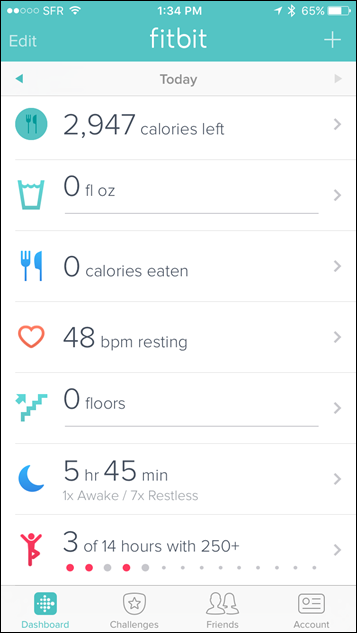
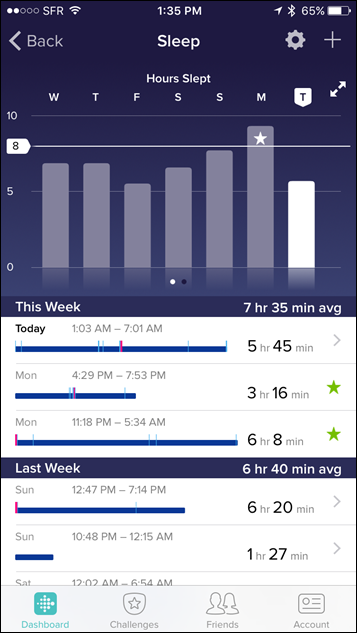
You can then click on a given day and get a bit more detail about that night’s sleep. It’ll divide up your time into Asleep/Restless/Awake. To some degree I appreciate the simplicity here – since it’s probably more accurate that some of the sleep-state assumptions that others provide.
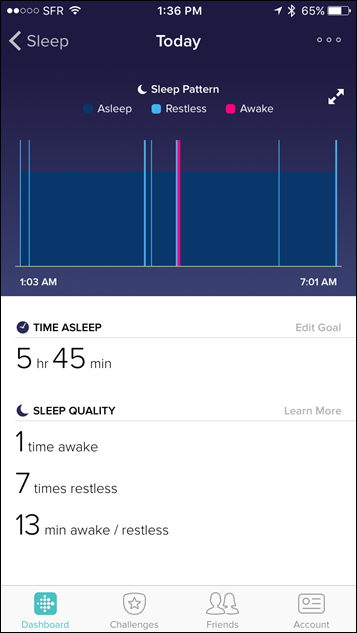
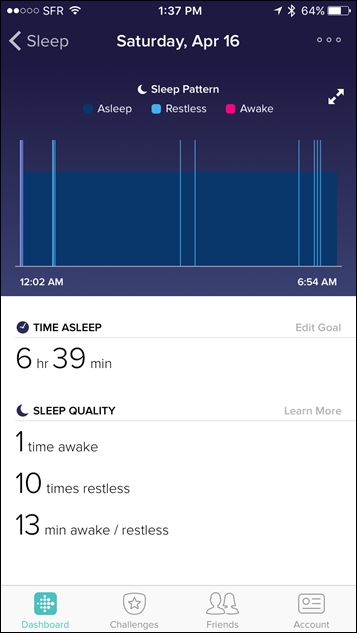
Note that you can edit the times if for some reason they’re off. In my case, I’ve found they pretty much nail my sleep times quite well.
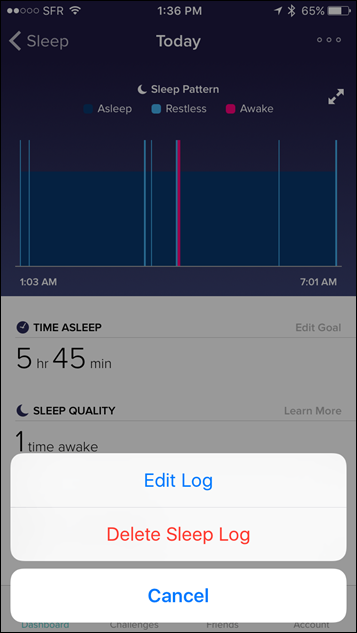
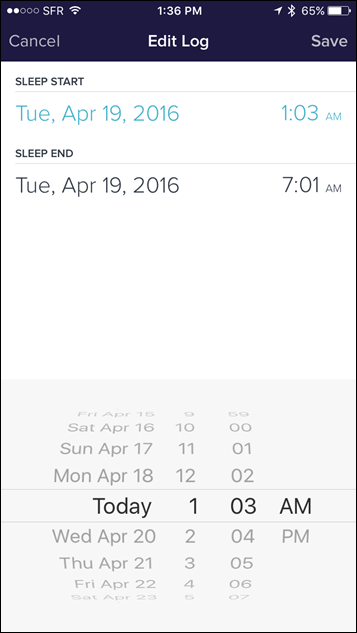
You’ll notice a small star next to some nights. That indicates you hit your sleep goal. You can customize this by hitting the little settings icon, changing the number of hours/minutes that you aim for each night:
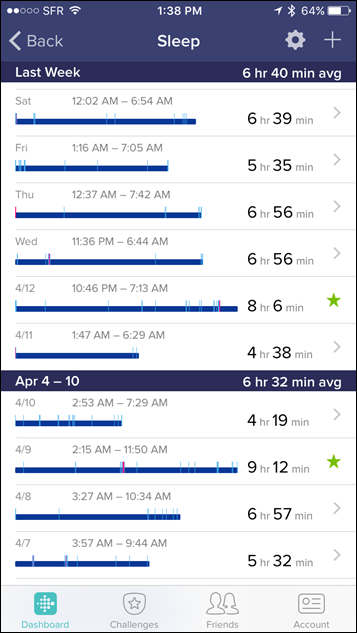
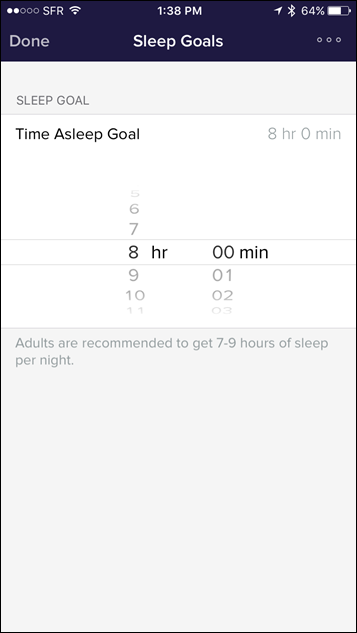
Next up we’ve got alarms. You can create a silent (vibrating) alarm on the Fitbit Alta by going to your main dashboard on the app and selecting the Alta device. Then from there you’ll select Silent Alarms and then ‘Set a New Alarm’.
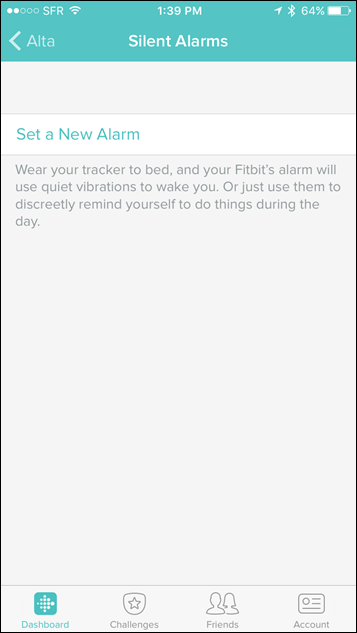
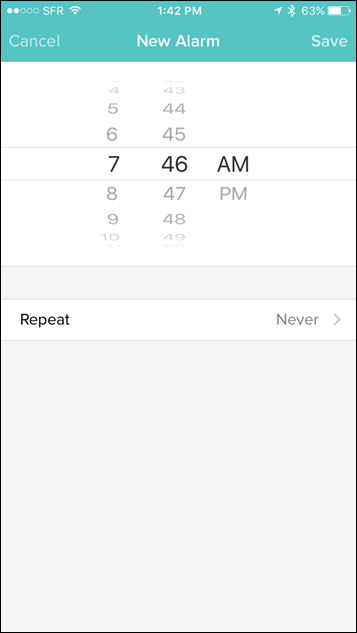
You can set additional day-specific options too.
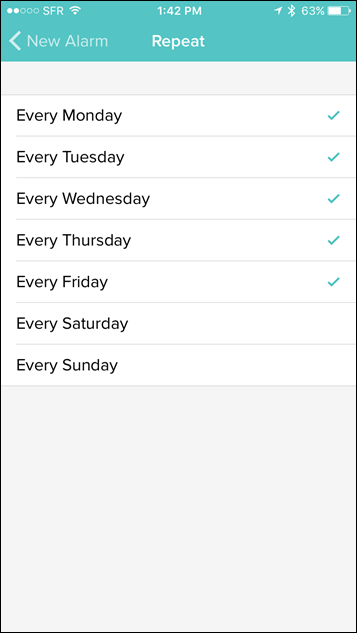

Once the alarm buzzes, it’ll repeat once, then go away. Else, you can double-tap to dismiss. I kinda wish it would just keep buzzing till I dismissed it. As it doesn’t last very long.
Finally, you can create multiple alarms if you’d like. This software implementation for creation of alarms is actually one of the cleanest I’ve seen on a wrist band type wearable. Rather nicely done.
Smartphone Notifications:
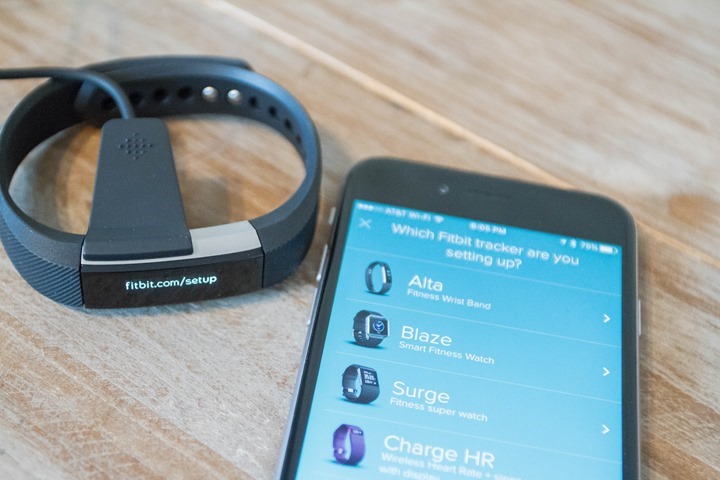
The Alta has smartphone notifications, or more accurately – call, text, and calendar notifications. You’ll remember from my past Fitbit posts, such as the Fitbit Blaze, that I’ve been relatively annoyed with Fitbit’s lack of general smartphone notifications. By that I mean that you can’t get notifications from apps like Twitter, WhatsUp, or countless others that use the standard notification center functionality (like almost all other activity trackers).
But in this case, I don’t mind that too much with the Fitbit Alta. Why’s that?
Because the Alta screen is totally useless for any notifications at all.
How so?
Well, the screen real estate and the method it shows you text messages makes it just not terribly useful. To begin, unlike most other wrist bands, the entire name and text message is on a single line (versus double-stacked). Except, the screen is too short to display much other than a portion of just the name of the incoming texter, let alone the message.
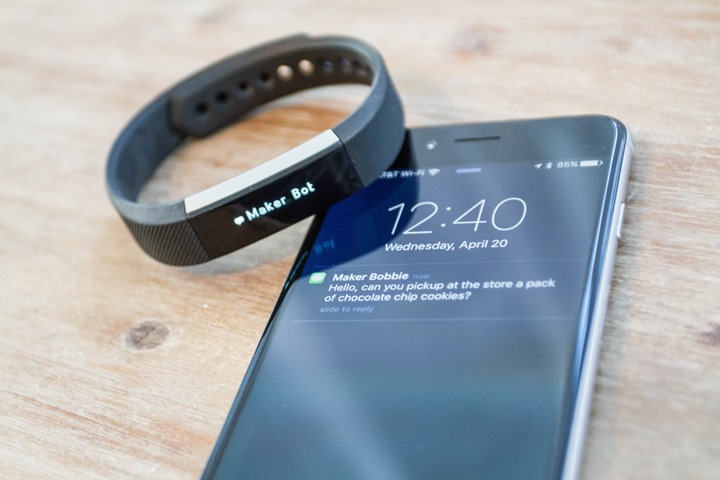
So then it scrolls the message. Except, the scrolling is so slow that Grandma would even get bored waiting. Not only is it slow, but then it cuts off the text message after a few words. Here’s an animated GIF of the text seen above (you have to twist it like on your wrist to get it to start):
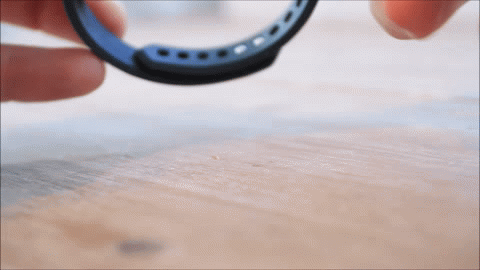
So basically, by the time all of this happened you could have just taken out your phone to look at the message. Which you’ll have to do anyway because it didn’t finish showing you the text.
And don’t get me even started on the fact that the rotation of the wrist display adds even more delay and latency to this entire process (because it’s finicky in and of itself). Or the fact that if during the wrist rotation it false-triggers, then you can’t get back to that text at all, without of course going to your phone. It’s like Snapchatted sext, without any way to re-read the message.
Finally, yes it does display both calendar alerts and incoming phone calls. The phone call piece is a bit better than the text piece, because there’s no text message along with it. So it just shows a phone icon and buzzes with the name of the caller.
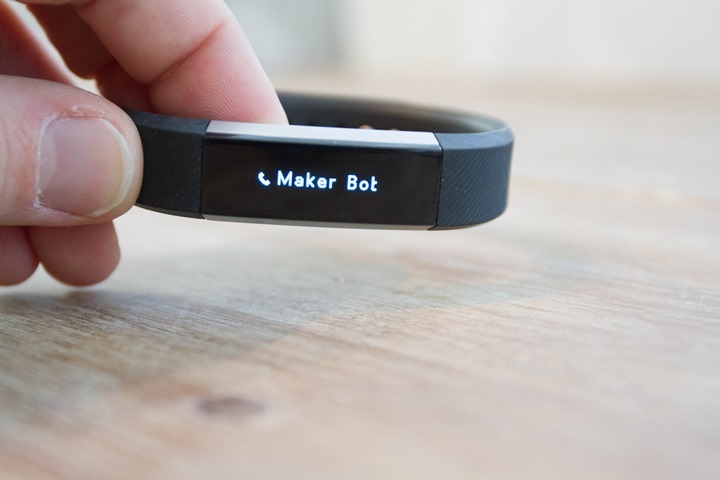
And calendar notifications are kinda halfway in between. I think much of the Alta’s notification display problem could actually be solved if they just used two lines to display the text messages. That’d solve the latency/slow-scrolling problem, as well as the lack of length problem.
Comparison Chart:
I’ve added the Fitbit Alta into the product comparison tool for activity trackers, so you can go ahead and compare it against other standalone activity trackers (non-GPS). While I’ve added a few comparative Fitbit options below, you can make your own table here in the product comparison tool.
Copyright DC Rainmaker – Updated February 4th, 2017 @ 7:09 amNew Window
Price$109$149$129
Body PlacementWristWristWrist
Data Transfer TypeBluetooth SmartBluetooth SmartBluetooth Smart
Bluetooth to PhoneYesYesYes
Has GPS built-inNoNoNo
WaterproofingATM1 (~10m)1ATM (~10m)Not really
Battery LifeUp to 7 daysUp to 5 daysUp to 5 Days
Battery TypeUSB RechargeableUSB RechargeableUSB Rechargeable
Changeable Bands/StrapsNo
Phone Music ControlNoNo
Displays timeYesYesYes
Has time alarmsYesYesYes
Has smart sleep alarmsNoNoNo
Smartphone NotificationsCall notifications onlyCall notifications onlyText/Call/Calendar only
Workout guidance/coachingNoNoNo
Step CounterYesYesYes
Stairs ClimbedYesYesNo
Distance WalkedYesYesYes
Calories BurnedYesYesYes
Sleep MetricsYesYesYes
24×7 HR MetricsNoYesNo
Skin TemperatureNoNoNo
Heart RateNoYesNo
Optical Heart RateNoYesNo
Can re-broadcast Heart Rate dataNoNoNo
Skin PerspirationNoNoNo
Cycling SensorsNoNoNo
Action Camera ControlNoNoNo
Web ApplicationYesYesYes
PC ApplicationYesYesYes
Mac ApplicationYesYesYes
Phone AppsiOS/Android/Windows PhoneiOS/Android/Windows PhoneiOS/Android/Windows Phone
Ability to export/sync settings from computer/phoneYesYesYes
3rd parties can access data via APIYesYesYes
Ability to export your data out of platformYes (paid option)YesYes
Amazon LinkLinkLinkLink
Clever Training Link (Save 10% with DCR10BTF)LinkLinkLink
Review LinkLinkLinkLink
Again, remember you can make your own comparison charts here in the product comparison tool!
Summary:
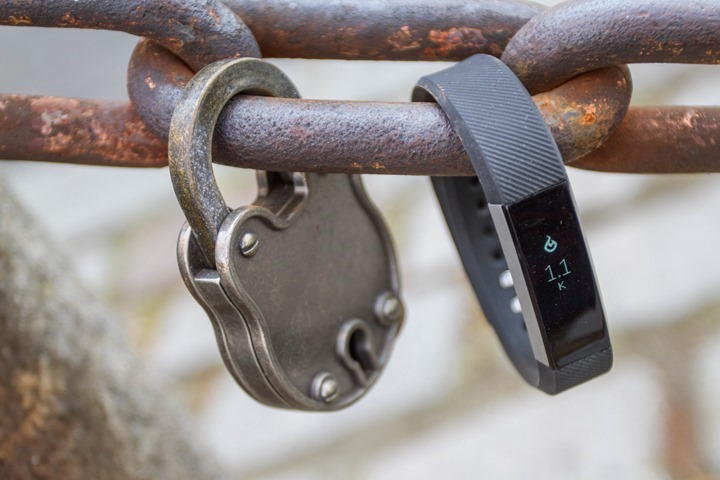
In many ways, I feel like the Alta was a product released ‘just to release a product’. Not because it offered a unique selling point other than being a Fitbit branded product that’ll sell by the millions. Just like McDonald’s sells millions of cheeseburgers, doesn’t mean they’re the best cheeseburger around. On the flip side, the Alta isn’t bad. It’s just not great.
The Alta is in a tough spot in that I like the slimmed up form factor and design better than the Fitbit Charge. And unlike the charge it has the SmartTrack workout automatic recognition. But at the same time, it lacks the Charge’s ability to manually create workouts (or just a timer), which is generally more useful in a gym/workout setting.
Fitbit counters that the Alta is designed to be an all-day activity tracker, which is a fancy way of saying it’s supposed to be used for the 23 hours of the day that you’re not working out. And in much of that it does well. For example, the encouragement with the inactivity alerts are executed well, as is the entire app integration piece. And even the SmartTrack triggers for long walks around town. The battery – also on-point. All good in many categories.
It’s just too bad that the smartphone integration is so lackluster, as that’s really such a downside of the unit compared to so many other competitive options that execute that portion better.
Of course – like most activity trackers on the market today, Fitbit doesn’t have any issues counting steps or sleep or other core metrics. And Fitbit’s main strength is their platform with millions of users on it. Users that are likely your friends. That matters when it comes to encouragement of hitting various step goals. So if all else is equal and you’re trying to decide between Brand X and Brand Y, I generally recommend looking to see what your friends have on their wrists, and choosing something of the same brand to take advantage of those social features.
Wanna save 10%? Or found this review useful? Read on!

Hopefully you found this review useful. At the end of the day, I’m an athlete just like you looking for the most detail possible on a new purchase – so my review is written from the standpoint of how I used the device. The reviews generally take a lot of hours to put together, so it’s a fair bit of work (and labor of love). As you probably noticed by looking below, I also take time to answer all the questions posted in the comments – and there’s quite a bit of detail in there as well.
I’ve partnered with Clever Training to offer all DC Rainmaker readers an exclusive 10% discount across the board on all products (except clearance items). You can pickup the Fitbit Alta (or any other Fitbit Alta bands) from Clever Training. Then receive 10% off of everything in your cart by adding code DCR10BTF at checkout. By doing so, you not only support the site (and all the work I do here) – but you also get a sweet discount. And, since this item is more than $75, you get free US shipping as well.
Fitbit Alta (select drop-down for size/colors)
Fitbit Aria Scale (compatible with Fitbit Alta, see my WiFi Scale roundup here)
Additionally, you can also use Amazon to purchase the unit (all colors shown after clicking through to the left) or accessories (though, no discount on Amazon). Or, anything else you pickup on Amazon helps support the site as well (socks, laundry detergent, cowbells). If you’re outside the US, I’ve got links to all of the major individual country Amazon stores on the sidebar towards the top. Though, Clever Training also ships there too and you get the 10% discount.
Thanks for reading!
